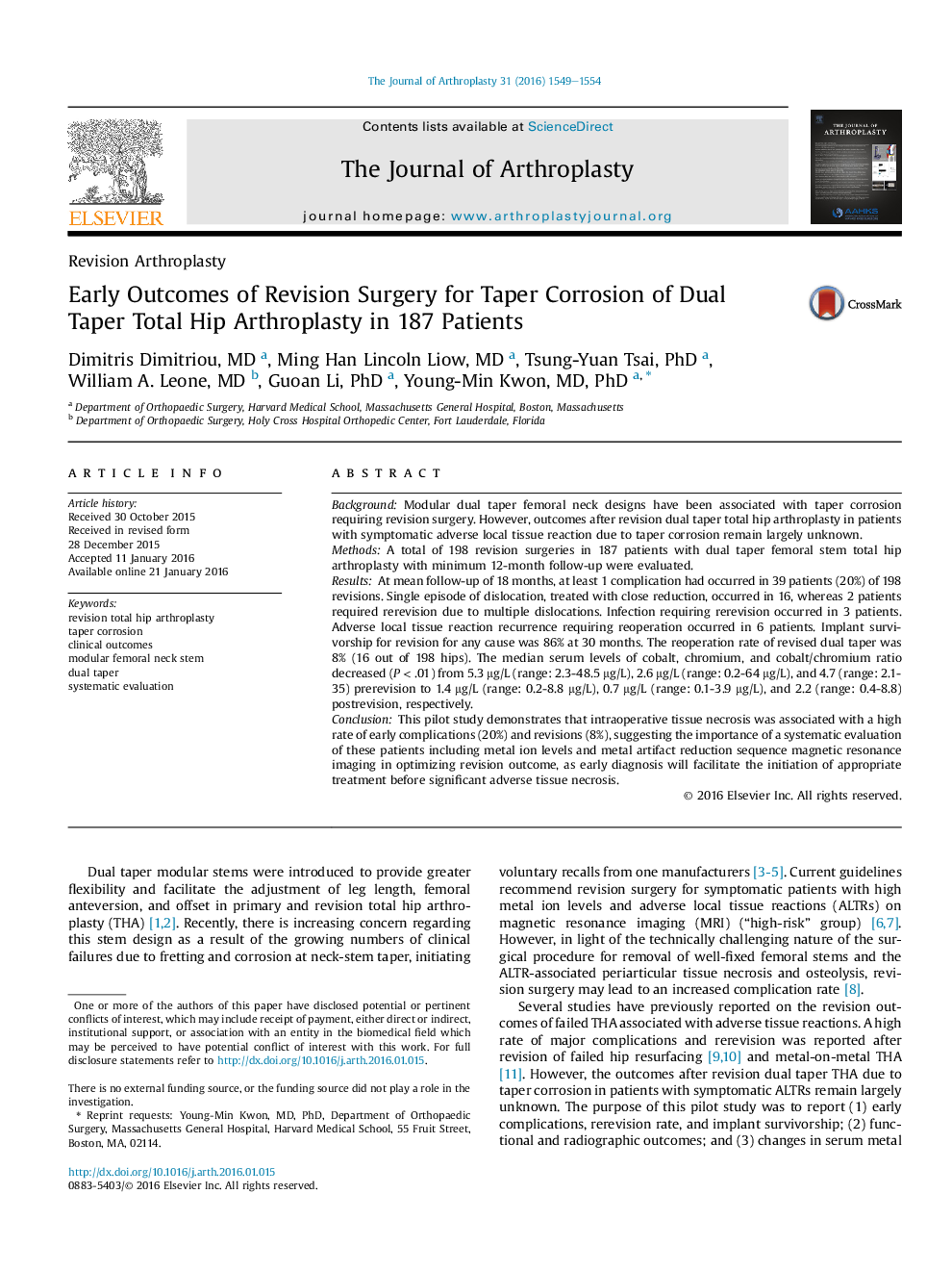| Article ID | Journal | Published Year | Pages | File Type |
|---|---|---|---|---|
| 6208492 | The Journal of Arthroplasty | 2016 | 6 Pages |
BackgroundModular dual taper femoral neck designs have been associated with taper corrosion requiring revision surgery. However, outcomes after revision dual taper total hip arthroplasty in patients with symptomatic adverse local tissue reaction due to taper corrosion remain largely unknown.MethodsA total of 198 revision surgeries in 187 patients with dual taper femoral stem total hip arthroplasty with minimum 12-month follow-up were evaluated.ResultsAt mean follow-up of 18 months, at least 1 complication had occurred in 39 patients (20%) of 198 revisions. Single episode of dislocation, treated with close reduction, occurred in 16, whereas 2 patients required rerevision due to multiple dislocations. Infection requiring rerevision occurred in 3 patients. Adverse local tissue reaction recurrence requiring reoperation occurred in 6 patients. Implant survivorship for revision for any cause was 86% at 30 months. The reoperation rate of revised dual taper was 8% (16 out of 198 hips). The median serum levels of cobalt, chromium, and cobalt/chromium ratio decreased (P < .01) from 5.3 μg/L (range: 2.3-48.5 μg/L), 2.6 μg/L (range: 0.2-64 μg/L), and 4.7 (range: 2.1-35) prerevision to 1.4 μg/L (range: 0.2-8.8 μg/L), 0.7 μg/L (range: 0.1-3.9 μg/L), and 2.2 (range: 0.4-8.8) postrevision, respectively.ConclusionThis pilot study demonstrates that intraoperative tissue necrosis was associated with a high rate of early complications (20%) and revisions (8%), suggesting the importance of a systematic evaluation of these patients including metal ion levels and metal artifact reduction sequence magnetic resonance imaging in optimizing revision outcome, as early diagnosis will facilitate the initiation of appropriate treatment before significant adverse tissue necrosis.
